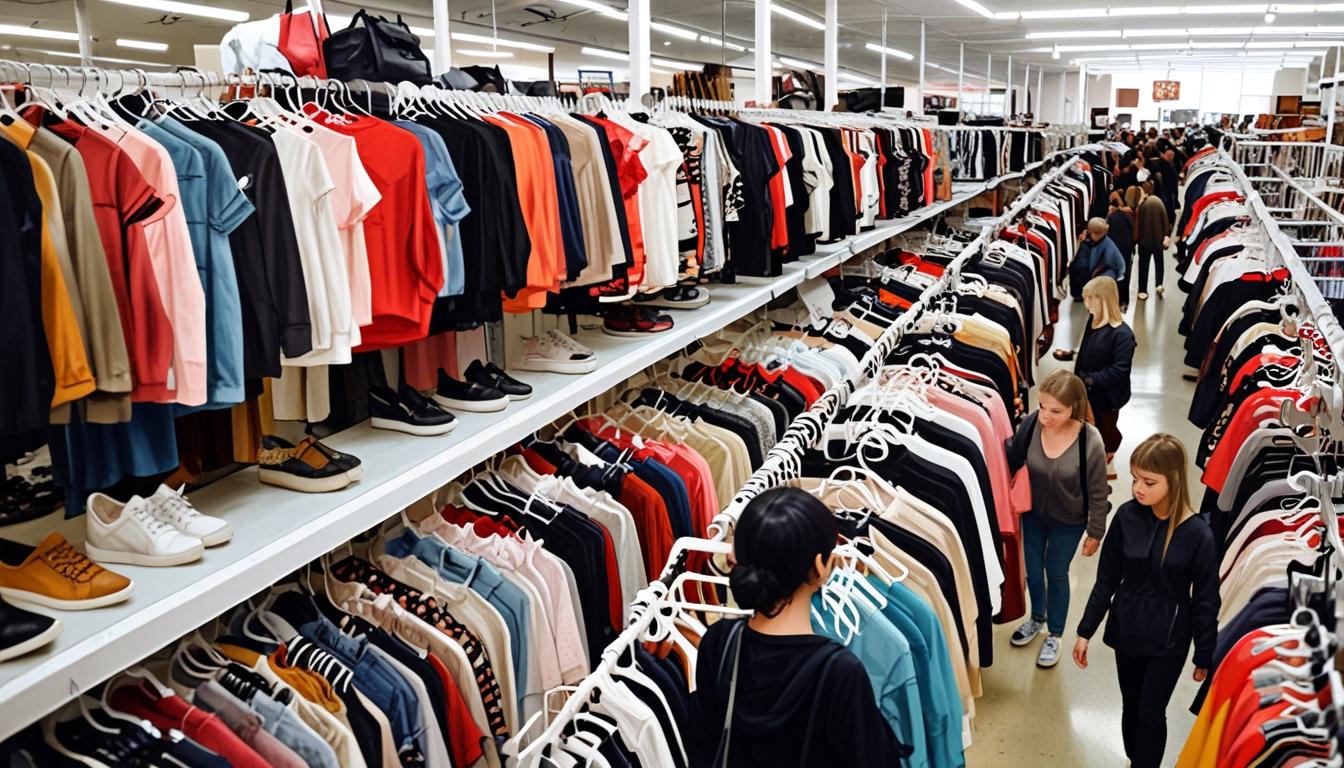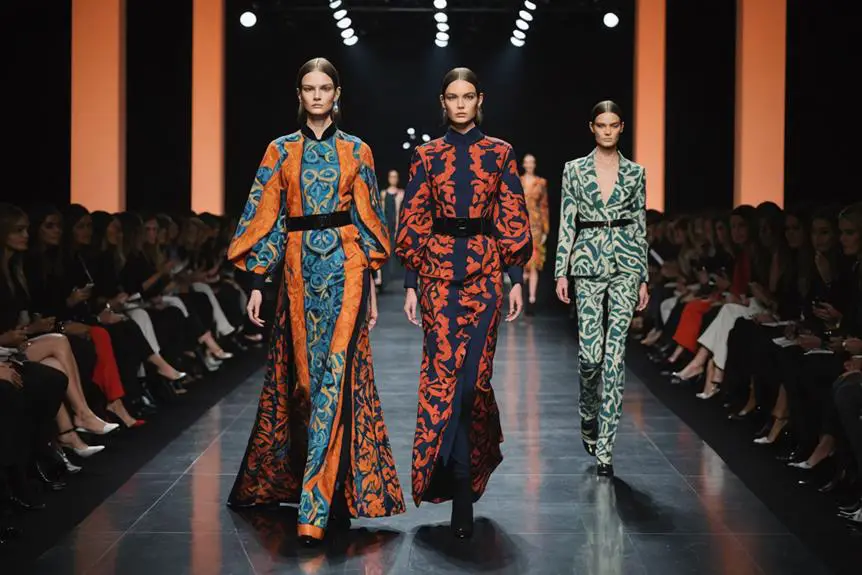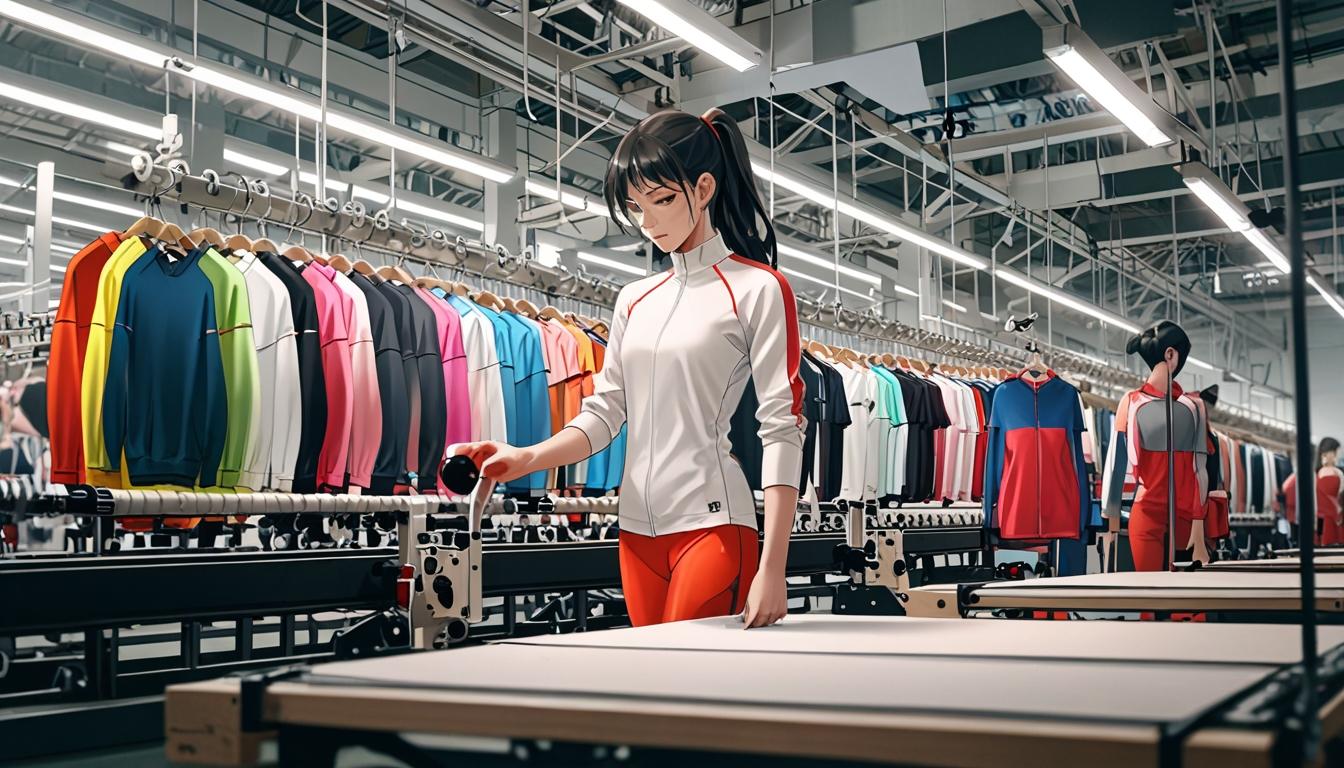With tariffs raising prices on imported new apparel and leather goods, more American consumers are turning to secondhand clothing and online resale platforms as affordable and sustainable alternatives, fueling growth in the preowned fashion market amid ongoing trade tensions.
Stores selling secondhand clothing, shoes, and accessories in the United States are positioned to benefit amid the ongoing trade conflict initiated under President Donald Trump’s administration, industry experts indicate. The trade war, characterized by tariffs on imported goods, is prompting significant increases in prices for new clothing items, potentially shifting consumer purchasing behaviors toward secondhand fashion options.
According to a recent estimate by Yale University’s Budget Lab, consumers could soon face short-term price increases of 65% for apparel and 87% for leather goods as a consequence of the tariffs. Because nearly all clothing sold domestically in the U.S. is manufactured overseas, these tariffs have a disproportionate effect on clothing and related items. Kristen Classi-Zummo, an apparel industry analyst at market research firm Circana, told ABC News, “I think resale is going to grow in a market that is declining. What I think is going to continue to win in this chaotic environment are channels that bring value.”
This trend is driving cost-conscious shoppers to online resale platforms, consignment boutiques, and thrift stores seeking more affordable alternatives or opportunities to monetize their existing wardrobes. Used items generally cost less than new products and are only subject to tariffs if imported from abroad. Jan Genovese, a retired fashion executive who sells designer clothes on peer-to-peer marketplaces like Mercari, expressed that if tariffs raise retail prices, she would consider turning to high-end secondhand sites. “Until I see it and really have that sticker shock, I can’t say exclusively that I’ll be pushed into another direction,” Genovese said. “I think that the tariff part of it is that you definitely rethink things.”
The secondhand clothing market was already experiencing robust growth prior to these tariff developments. Following the COVID-19 pandemic, management consulting firm McKinsey & Company predicted that global revenues from preowned fashion would grow at a rate 11 times faster than conventional retail apparel sales by 2023. This growth was attributed to shoppers’ desires to save money and make more environmentally conscious purchasing decisions.
While millennials and Generation Z were traditionally the primary buyers of used clothing, data shared by market research company Sensor Tower points to an expanding audience. Between January and March of this year, mobile app downloads for nine key resale marketplaces, including eBay, OfferUp, Poshmark, Mercari, Depop, ThredUp, The RealReal, and Vinted, increased by 3%—marking the first quarterly gain in three years. The surge was particularly notable in the week after President Trump unveiled his tariff schedule targeting multiple countries, although some of the tariffs have been paused since.
Classi-Zummo observed a shift in buyer behavior on resale platforms, noting that shoppers are increasingly purchasing everyday fashion items secondhand instead of just collectible or vintage pieces. “It’s still a cheaper option,” she said, “even though retailers offer discounts.”
Poshmark, a major digital marketplace for preowned clothing, has not yet seen an immediate uptick in sales following the tariff announcements but is preparing to leverage the situation through technology upgrades. CEO Manish Chandra explained that visual search tools and other enhancements to the Poshmark platform are designed to “pay long dividends in terms of disruption that happens in the market” due to tariffs.
Similarly, Emily Gittins, CEO of Archive—a San Francisco-based company that manages resale programs for brands such as Dr. Martens, The North Face, and Lululemon—said more brands are expressing urgency to collaborate on resale initiatives. “There’s a huge amount of uncertainty,” Gittins said. “Everyone believes that this is going to be hugely damaging to consumer goods brands that sell in the U.S. So resale is basically where everyone’s head is going.”
Market analysts have also noted that off-price retailers like TJ Maxx and Burlington Stores might better withstand tariff-related pressures because they typically carry leftover merchandise already in the U.S., contrasting with regular apparel chains and department stores reliant on ongoing imports.
However, resale businesses are not entirely shielded from tariff-related complications. Rachel Kibbe, founder and CEO of Circular Services Group—which advises brands on sustainable fashion—highlighted that U.S. sellers importing secondhand goods from the European Union would face a 20% duty if the administration proceeds with “reciprocal” tariffs and revokes the existing exemption on imports valued under $800. Kibbe’s circular fashion coalition is advocating for tariff exemptions on used and recycled products intended for resale. She also noted that Trump’s end to the duty-free provision on low-value parcels from China could benefit secondhand sellers by increasing the prices of low-cost new goods imported from China.
James Reinhart, CEO of the online consignment platform ThredUp, expressed that the removal of the “de minimis” exemption and the imposition of a 145% tariff on certain Chinese goods could aid businesses like his, although he remains doubtful that establishing resale channels will significantly help individual fashion brands survive the tariff impact. “Brands will explore this and they may do more, but I don’t see them massively changing their operations,” Reinhart said. “I think they’re going to be figuring out how to survive. And I don’t think resale helps you survive.”
Rebag, a marketplace specializing in used designer handbags, anticipates tariffs will drive new customer interest and plans to expand its physical retail presence. CEO Charles Gorra indicated that Rebag will monitor price changes in new luxury goods and adjust its own pricing accordingly, though he recognized that some consumers are already feeling priced out. “That has nothing to do with the tariffs,” Gorra said. “Consumers are feeling priced out.”
Among younger consumers, Norah Brotman, a 22-year-old senior at the University of Minnesota, purchases most of her clothes from eBay and resells thrifted items from Goodwill through Depop. She expressed optimism about the potential long-term effects of tariffs on fast fashion consumption, saying, “I would love if this would steer people in a different direction.”
As the trade war continues to unfold, the growing interest in secondhand clothing and related marketplaces reflects a complex interplay between pricing pressures, consumer preferences, and shifts within the fashion industry’s supply chain. The ongoing adjustments by both retailers and consumers suggest evolving dynamics shaped by the tariffs’ economic impacts.
Source: Noah Wire Services




